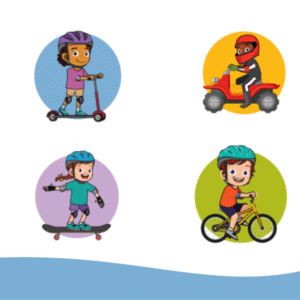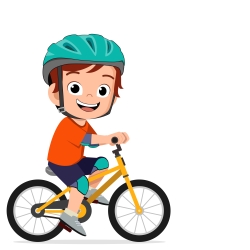how do I choose the right helmet?
different activities require different helmet protection for your child
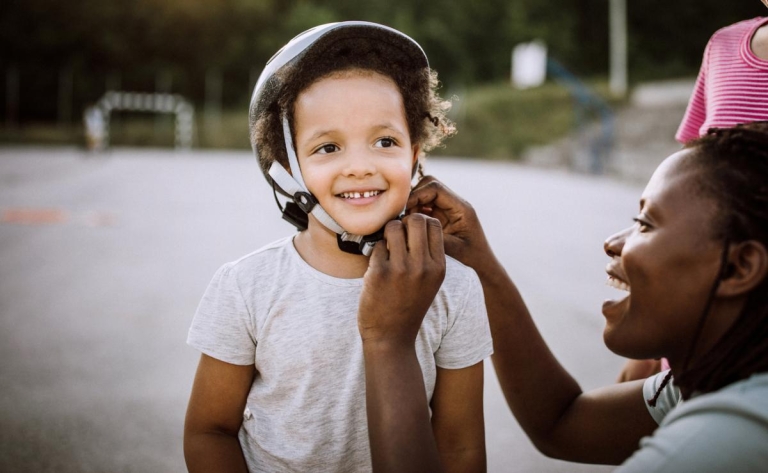
We’ve all heard “wear a helmet,” “put a lid on it,” “head’s up!” and other helmet safety campaigns from children’s health advocates, coaches, and even advertisements. While we know our children should wear helmets, it can be difficult to know the right type of helmet to choose for each occasion. According to the Consumer Product Safety Commission, the right helmet needs to meet the safety standards outlined for each activity. For some activities, like ice skating or riding a scooter, a bicycle helmet will provide enough coverage, but for others like ATV riding, contact sports, and skiing, specialized helmets are recommended because a bicycle helmet will not provide enough protection. This graph might help you make the choice.
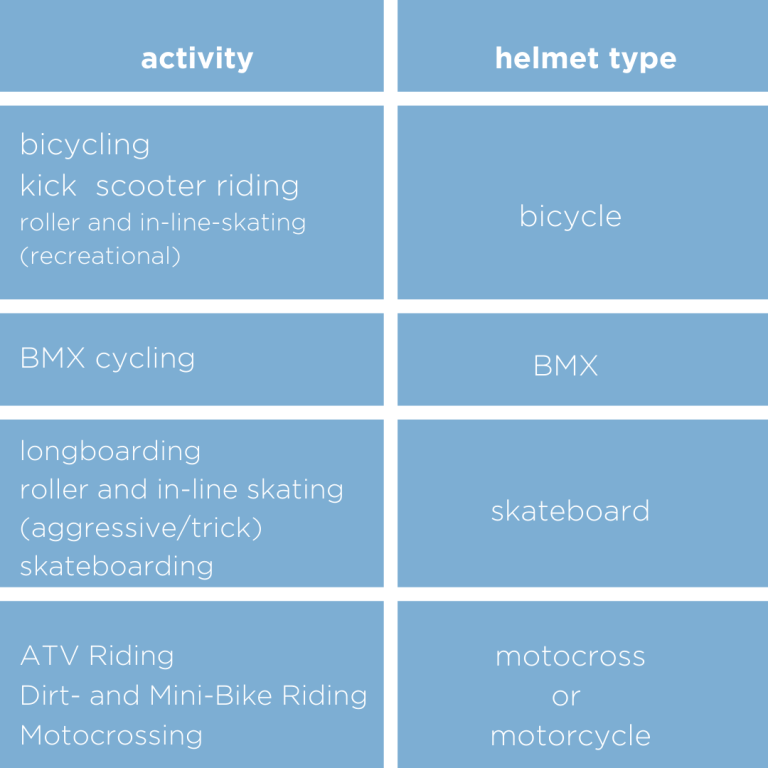
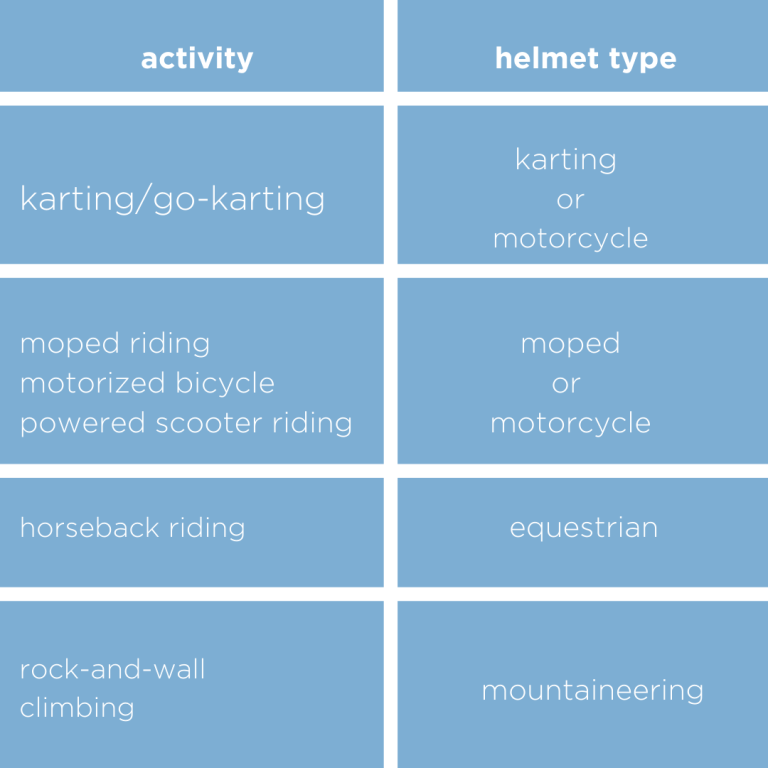
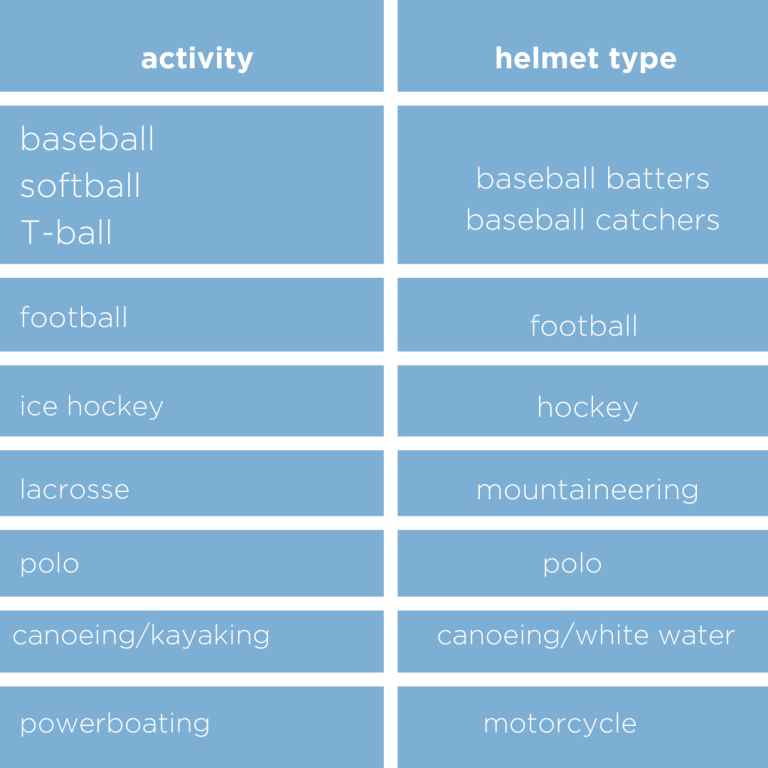
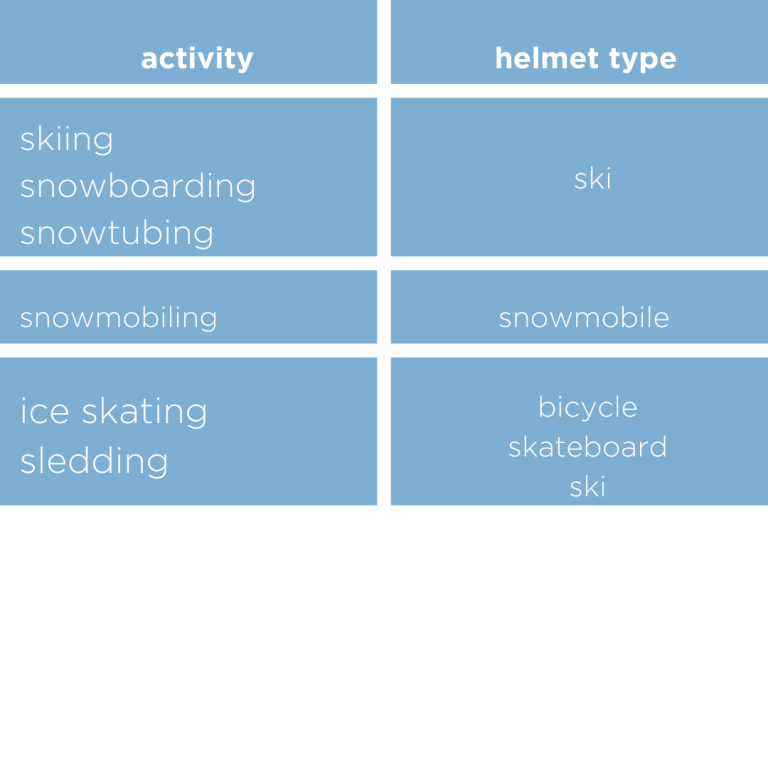
Once you’ve got the right helmet, it’s still important to make sure it fits properly. Watch this video how do you know it fits? This video from the Center for Disease Control and Prevention to get simple instructions for making sure the helmet is fitted properly.
Use the acronym SAFE to check for proper fit:
- Size– Find out the size of your child’s or teen’s head by wrapping a soft tape measure around their head, just above their eyebrows and ears. Make sure the tape measure stays level from front to back. (If you don’t have a soft tape measure, you can use a string and then measure it against a ruler.)
- Ask– Ask your child how the helmet feels on their head, make sure the helmet isn’t too loose or too tight.
- Fit– Check to see if the helmet slips or shifts on their head
- Evaluate– Ask your child to buckle their helmet and open their mouth wide, if the helmet fits snugly then the helmet is properly fitted.
IF you’re looking for more specific information about the different types of helmets, check out this fact sheet from the CDC.
care that goes above and beyond
Because every child deserves care that goes above and beyond, Dayton Children’s provides compassionate, expert care for kids of all ages. Find a provider, schedule an appointment, or learn more about conditions we treat today.

